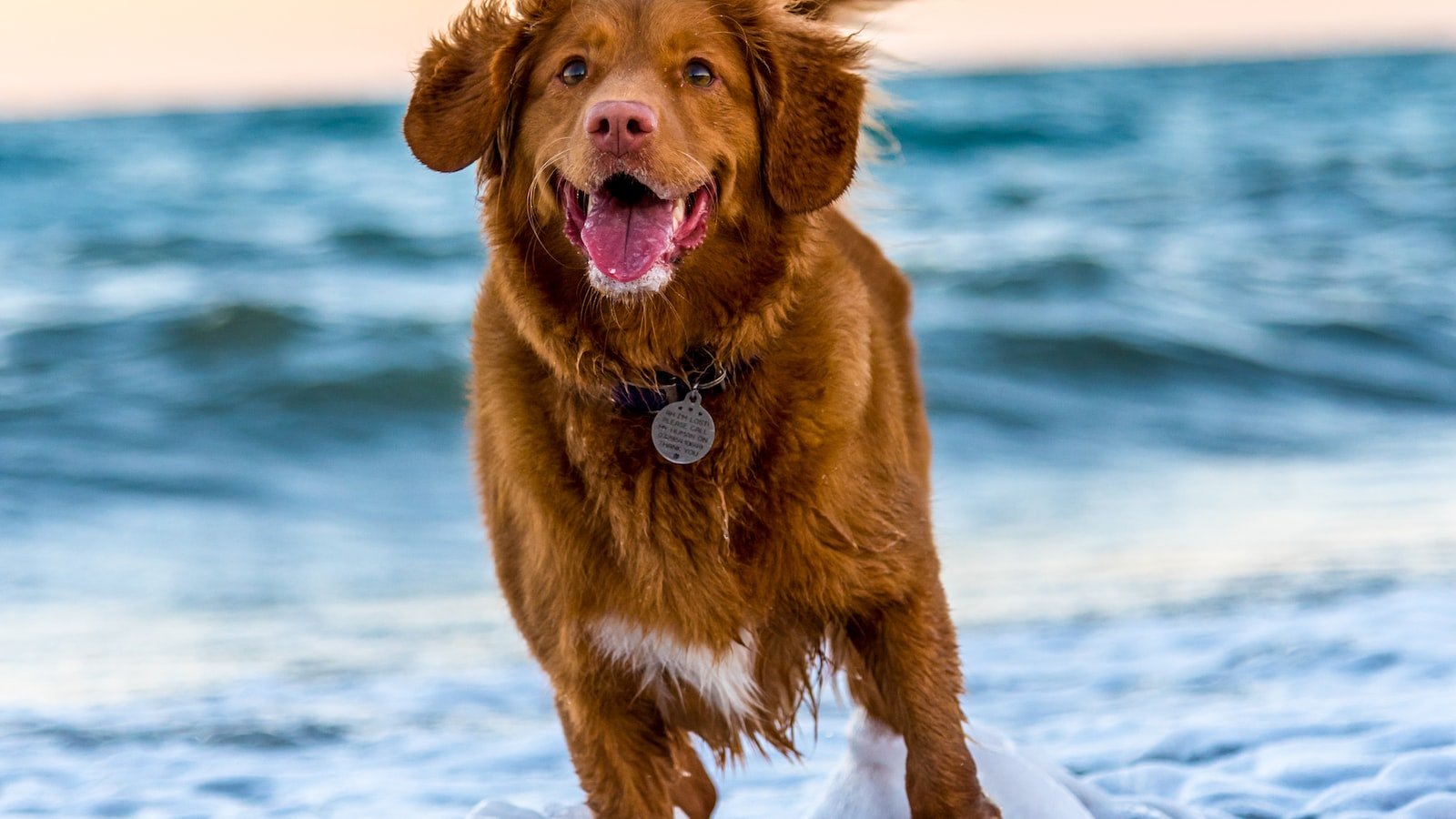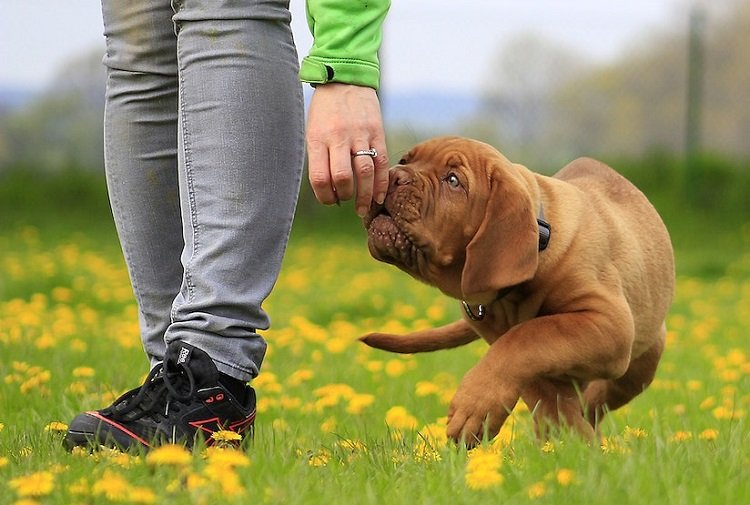Are you longing for a furry companion to offer you unwavering support through life’s ups and downs? Look no further than our loyal and loving canines. Dogs have long been recognized for their ability to provide emotional support, easing anxiety, depression, and stress. But what if their assistance could be taken one step further? Enter the “Hug” command, a unique training technique that empowers dogs to comfort their owners with an embrace, adding a soothing layer of emotional connection. In this article, we delve into the world of dog training for emotional support and explore how the simple act of a heartfelt hug can create profound impacts on human well-being.
Table of Contents
- Dog Training for Emotional Support: The “Hug” Command
- Understanding the Importance of Emotional Support Training for Dogs
- Unveiling the Power of the “Hug” Command for Emotional Support
- Step-by-Step Guide: Teaching Your Dog the “Hug” Command
- Enhancing the Bond: Incorporating “Hug” Training into Daily Routines
- Mastering the “Hug” Command: Troubleshooting Tips and Advanced Techniques
- Q&A
- In Summary

Dog Training for Emotional Support: The “Hug” Command
Teaching your dog the “Hug” command can be a beneficial tool in providing emotional support for both you and your furry friend. This command allows your dog to learn a comforting embrace, which can help alleviate stress and anxiety in both of you.
To begin training, start by establishing a calm and relaxed environment. Encourage your dog to sit facing you, and ensure they are attentive and receptive to commands. With a treat in hand, put it close to your chest and give the verbal command “Hug.” Simultaneously, gently guide your dog’s paws to rest on your shoulders or upper arms.
It’s crucial to reward your dog when they respond correctly to the command. Consistency and positive reinforcement are key elements in establishing this behavior as a reliable tool for emotional support. Practice the “Hug” command regularly, gradually increasing the duration of the embrace. Over time, your pup will associate this cue with comfort, trust, and emotional assistance, providing you with a pawfect source of support when needed.

Understanding the Importance of Emotional Support Training for Dogs
Emotional support training plays a crucial role in enhancing the well-being and happiness of our beloved canine companions. Dogs, just like humans, experience a wide range of emotions, including anxiety, fear, and loneliness. Therefore, it is essential to provide them with the tools and support they need to navigate and cope with these emotional challenges.
One of the key aspects of emotional support training is helping dogs develop a strong sense of trust and security. This can be achieved through positive reinforcement techniques, which involve rewarding desired behaviors and redirecting negative ones. By consistently reinforcing positive behaviors, such as calming down in stressful situations or responding to cues, dogs can gradually build confidence and feel more secure in their environment.
Another vital aspect of emotional support training is socialization. Dogs thrive when they have the opportunity to interact with other animals and humans, as it helps them develop crucial social skills and learn how to navigate different social scenarios. Socialization can be facilitated through structured activities, such as supervised playdates with other friendly dogs, as well as exposure to various environments and stimuli.
- Emotional support training aids in reducing anxiety and stress levels in dogs.
- Establishing a strong bond between the dog and its owner is a key goal in this training.
- Enrichment activities, like puzzle toys and interactive games, can help stimulate mental and emotional well-being.
In conclusion, emotional support training is an invaluable investment in our dog’s overall well-being. By providing them with the necessary emotional tools, we can effectively enhance their happiness, confidence, and ability to cope with the ups and downs of life. With patience, understanding, and consistent training, our furry friends can thrive emotionally and enjoy a fulfilling life by our sides.

Unveiling the Power of the “Hug” Command for Emotional Support
When it comes to emotional support, sometimes words just aren’t enough. That’s where the power of the “Hug” command comes in. This simple yet incredibly powerful gesture has been proven to boost mood, reduce anxiety, and create a sense of comfort like no other.
Imagine this: you’ve had a long, stressful day and all you need is a little bit of comfort. With just a simple “Hug” command, you can instantly feel a warm embrace enveloping you. The power of touch is unparalleled, and hugging is no exception. It releases oxytocin, a hormone known as the “love hormone” that promotes feelings of trust and bonding.
Not only does the “Hug” command provide physical comfort, but it also has numerous mental and emotional benefits. It can help alleviate feelings of loneliness, reduce stress levels, and improve your overall well-being. Studies have shown that regular hugs can even increase self-esteem and boost your immune system!
So, whether you’re feeling down, overwhelmed, or just in need of a pick-me-up, don’t underestimate the power of the “Hug” command. Give yourself or someone else a tight squeeze, and experience the incredible transformative effects it can have on your emotional state. Harnessing the power of a hug is as easy as uttering those simple words, so go ahead, embrace this command and unlock its full potential for emotional support.
Step-by-Step Guide: Teaching Your Dog the “Hug” Command
It’s time to take your dog’s trick repertoire to the next level! Teaching your furry friend the “Hug” command is not only adorable but also a great way to bond with your canine companion. Follow this step-by-step guide to help your dog master this heartwarming trick.
Step 1: Establish Trust and Positive Reinforcement
Begin by creating a positive and trust-filled environment for your dog. Make sure they feel comfortable and at ease in their surroundings. Start by rewarding them with treats or praise for good behavior. Positive reinforcement is key to their learning process, so be patient and always remember to reward them when they get closer to achieving the desired behavior.
Step 2: Teach “Sit” and “Paw” Commands
Before diving into the “Hug” command, ensure your dog has mastered the basic commands of “Sit” and “Paw”. These foundational commands will prepare them for the more complex action of hugging. Use treats, praise, and repetition to reinforce these commands until your furry companion effortlessly responds to them.
Step 3: Introduce the “Hug” Gesture
Now comes the fun part! Begin by having your dog sit in front of you. With a treat in hand, guide their paw to your shoulder and gently say the command “Hug”. As they move in position, reward them with a treat and plenty of praise. Repeat this step multiple times, gradually reducing the amount of physical assistance until your dog can perform the “Hug” gesture independently.
Step 4: Reinforce and Refine the “Hug” Command
Consistency is key in refining the “Hug” command. Continue practicing the command in various settings and scenarios to strengthen the behavior. Keep rewarding your dog each time they successfully execute the command. Over time, you can add cues like a hand signal or verbal command to reinforce their understanding of the “Hug” gesture.
Remember to always make training sessions enjoyable, rewarding, and filled with love. With time, patience, and the guidance provided in this step-by-step guide, your loyal companion will be showing off their hugging skills in no time!
Enhancing the Bond: Incorporating “Hug” Training into Daily Routines
Incorporating “Hug” Training into daily routines is a wonderful way to enhance the bond between you and your loved ones, whether they are furry or not. Hugs have long been recognized as a powerful gesture of affection, and integrating this form of training into your daily interactions can have numerous benefits.
Here are a few creative ways to make “Hug” Training a part of your daily routine:
- Start the day with a hug: Begin every morning by hugging your loved ones. This simple act will set the tone for the day and create a positive connection right from the start.
- Create a “Hug Jar”: Decorate a jar and fill it with written promises to give hugs at any time during the day. Encourage everyone in the household to participate and keep the jar in a visible place. Whenever someone needs a hug or wants to offer one, they can simply pick a promise from the jar.
- Organize “Hug Time”: Set aside a specific time each day dedicated solely to hugging. This can be during movie nights, family dinners, or before bedtime. Make it a priority to gather everyone for a group hug and cherish the moment of togetherness.
By incorporating “Hug” Training into your daily life, you will not only strengthen your bond but also create a warm and loving environment that everyone can benefit from. Remember, a hug is a universal language that speaks volumes without saying a word.
Mastering the “Hug” Command: Troubleshooting Tips and Advanced Techniques
In your quest to become an expert in the “Hug” command, occasional obstacles and challenges may arise. Fear not! We are here to equip you with troubleshooting tips and advanced techniques that will have your furry friends craving your affectionate embraces in no time.
1. Engage in positive reinforcement: If your pet seems hesitant or unresponsive to the “Hug” command, try offering treats or praise to encourage their participation. Positive reinforcement will help them associate hugs with a pleasurable experience, fostering a stronger bond between you and your pet.
2. Respect personal space: Remember that each pet has their own comfort level with physical contact. If your pet appears uncomfortable or tries to wriggle away, it’s essential to respect their boundaries. Gradually increase the duration and intensity of hugs to match their comfort level, ensuring that the experience remains pleasant for both of you.
3. Understand body language: Pets communicate nonverbally, and being in tune with their body language can help you gauge their response to the “Hug” command. Look for signs of relaxation, such as soft eyes, a relaxed posture, and gentle tail wagging. Conversely, if your pet displays signs of stress, like tense muscles, widened eyes, or flattened ears, it may be best to postpone the hugs and engage in other forms of bonding until they are more at ease.
By implementing these troubleshooting tips and employing advanced techniques tailored to your pet’s needs, you will be well on your way to mastering the art of the “Hug” command. Soon, your furry friends will eagerly anticipate your loving embraces, creating beautiful moments of connection and affection between you and your pet.
Q&A
Can dogs be trained to provide emotional support?
Yes, dogs can be trained to provide emotional support to individuals with mental health conditions. Through specialized training, they can learn various commands that help them provide comfort and assistance to their owners during times of emotional distress.
What is the “hug” command in dog training?
The “hug” command is a unique training technique that teaches dogs to mimic a gentle hug. With proper training, dogs can learn to lean their body weight onto their owner, providing a soothing pressure that may help reduce anxiety and promote feelings of security and comfort.
How is the “hug” command beneficial for emotional support?
The “hug” command can be highly beneficial for emotional support as it allows the dog to physically connect with their owner and provide a calming presence. The pressure applied during the hug can help release endorphins and lower stress levels, assisting individuals in managing their emotional distress.
What are the steps to train a dog to perform the “hug” command?
Training a dog to perform the “hug” command involves several steps. First, the dog must be comfortable with physical touch and basic obedience commands. Then, the training progresses by gradually teaching the dog to lean against the owner’s body while applying gentle pressure, rewarding and reinforcing the behavior throughout the process.
Can any dog be trained to perform the “hug” command?
The “hug” command can be taught to most dogs; however, it is essential to consider the dog’s size and temperament. Larger dogs may provide more substantial pressure, while smaller dogs can offer a gentler hug. Professional guidance can help determine if a specific dog is suitable for training in this command.
Is it safe to perform the “hug” command regularly?
Performing the “hug” command regularly is generally safe, but it is crucial to be aware of the dog’s physical limitations and any signs of discomfort. Dogs should never be forced or coerced into performing the command if they show resistance. It is important to prioritize the dog’s well-being and seek professional advice if any concerns arise during training.
In Summary
In a world where emotional support holds immense value, our furry companions often provide the solace and comfort we need. Dog training for emotional support has taken a delightful turn with the introduction of the “Hug” command. This simple yet profound gesture enhances the bond between humans and their canine friends, reminding us that the language of love transcends all barriers.
With whispers of encouragement and gentle touches, we have discovered an extraordinary way to connect with our furry companions on a deeper level. The “Hug” command revolutionizes the traditional notion of training, transforming it into an art form that celebrates empathy and understanding.
As we navigate through the varying challenges of life, our loyal canine friends remain steadfast in their unwavering support. The “Hug” command becomes a symbol of appreciation for their consistent presence and fierce loyalty. By teaching our dogs this magical command, we unlock a new dimension of emotional connection, reinforcing the profound bond we share.
The beauty of the “Hug” command lies in its ability to help both the dog and the human in their personal journeys. For those struggling with anxiety or various mental health conditions, the calming effect of a warm and loving embrace can work wonders. It serves as a gentle reminder that no matter how tough life may seem, there will always be a compassionate presence ready to provide comfort and solace.
Moreover, the “Hug” command also encourages emotional growth within our furry companions. Dogs thrive on love and attention, and by teaching them this command, we empower them to reciprocate the affection we shower upon them. It enhances their emotional intelligence, allowing them to better understand and respond to our needs, nurturing a unique bond that knows no bounds.
In a world brimming with chaos and uncertainty, the “Hug” command serves as a beacon of hope and a captivating reminder of the power of love. Let us embark on this enchanting journey with our beloved dogs, creating a sanctuary of emotional support where mutual understanding and affection blossom effortlessly. Together, we can rewrite the narrative of dog training, bringing forth a harmonious symphony of hugs, understanding, and everlasting companionship.
As an affiliate, my content may feature links to products I personally use and recommend. By taking action, like subscribing or making a purchase, you’ll be supporting my work and fueling my taco cravings at the same time. Win-win, right?
Want to read more? Check out our Affiliate Disclosure page.
